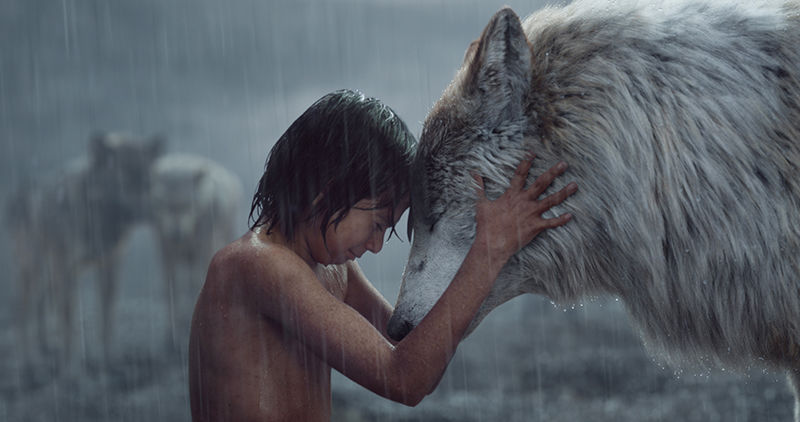Disney’s new version of “The Jungle Book” is a very entertaining film. The computer generated imagery (CGI) is about as good as it has ever been and the viewer’s imagination can be truly lulled into believing that the child actor who plays Mowgli is actually walking side by side with a whole menagerie of giant talking jungle animals. If I now stated that the film faithfully or unfaithfully adheres to Kipling’s original material I would just be vamping something I had to look up on the internet. I have a vague understanding of the original material and a somewhat more focused understanding of the “original” Disney animated feature from the 1960s. This new version is sort of, kind of faithful to both … until it isn’t.
And the way it diverts from both the 19th century sensibilities of Rudyard Kipling and the 20th century sensibilities of Walter Elias Disney, is a telling tale that should give us pause in the 21st century.
The Disney Company has never been shy about re-working or “Disney-fying” classic fairy tales. And, frankly, I’m grateful for that because even the most pasteurized versions of Disney animated features of yore were nightmare inducing enough. Do we really want to go beyond a kid being turned into a donkey before our eyes after a night’s revel on “Pleasure Island” and then herded by whip to what appears to be a slave ship by a maniacal brute, while the donkey-boy sniffs and cries for his mother? We should all be thankful that Disney edited out most of the “grimmer” stuff from the fairy tales he brought to life.
“The Jungle Book” got the same treatment from Disney when he made it into an animated feature in 1967. It was actually the last film Walt Disney personally supervised and if you suffered through the dreadful parade of lesser animated features that followed throughout the 1970s, the importance and genius of Disney both as a story teller and task master is beyond question.
Though in both the animated version of “The Jungle Book” and the new CGI version, most of the things that were left out of the original story were left out of the new version. Cooler heads in both eras prevailed and decided not to subject children in either 1967 or 2016 to the sights and sounds of screaming monkeys being devoured by a monkey-meat loving giant python.
It was not what both versions communally left out of the story that got me typing, but rather what the old version left in and the new one removed. It’s a little thing … only the entire crux of the story Rudyard Kipling was trying to convey.
Mowgli is a “man-cub” and as much as the wolves love him, he is not one of their kind, which in both versions sets a lot of unhappy history into motion. In the animated version though, truer to the Kipling tale, the emphasis is that Mowgli must take his rightful place among men. The jungle is not his home in the same sense that a village would be. Of course Mowgli wants to hear none of this. He is a boy after all, and he is impetuous and childishly stubborn and does not want to do what his elders (even if the elders are talking wolves, panthers and bears) know is best for him.
In the 2016 version, Mowgli must leave the wolf pack because Shere Khan is out to get him. Now that is also a major element of the original animated version but there is a major change in the rubrics. In both versions Shere Khan is a pretty cool villain. I mean, you can’t get cooler than George Sanders (look it up non-baby boomers) who voiced the 1967 version and British actor Idris Elba who brings a different but oh so menacing timbre to his Shere Khan 2.0.
In 1967 Mowgli runs away from his friends Baloo and Baghera because he finds out they are taking him to the man village against his wishes. Due to his recklessness he exposes himself to Shere Khan’s danger. It takes a fortuitous bolt of lightning, Baloo’s valor and a saving burning bush to vanquish this Tiger.
But in 2016 there is no overwhelming desire to return Mowgli to where he belongs and it becomes a vengeance move on Mowgli’s part to seek out fire (from a man village looking more like an absurdist’s view of one of Dante’s circles of hell than a place anyone, man or beast, would want to live) and kill Shere Khan for killing his wolf father.
When all the action subsides and the new Shere Khan meets a similar fiery fate as the old Shere Khan, peace returns to the jungle and we are left with Mowgli and Baloo and Baghera lounging on a tree kicking back and soaking up some rays. No need for anybody returning to any man village for these three.
In Kipling and Disney, a still reluctant Mowgli changes his mind about man-villages when he notices a female man-cub at the river’s edge drawing water. His true nature is racked into keen focus and it is the animals who must deal with their loss. Not so with the new version. The man-village is merely a plot contrivance and any discussion about being faithful to our true natures disappears … like so much smoke from man’s red flower.
Robert Brennan has been a professional writer for more than 30 years, including many years in the television industry.

